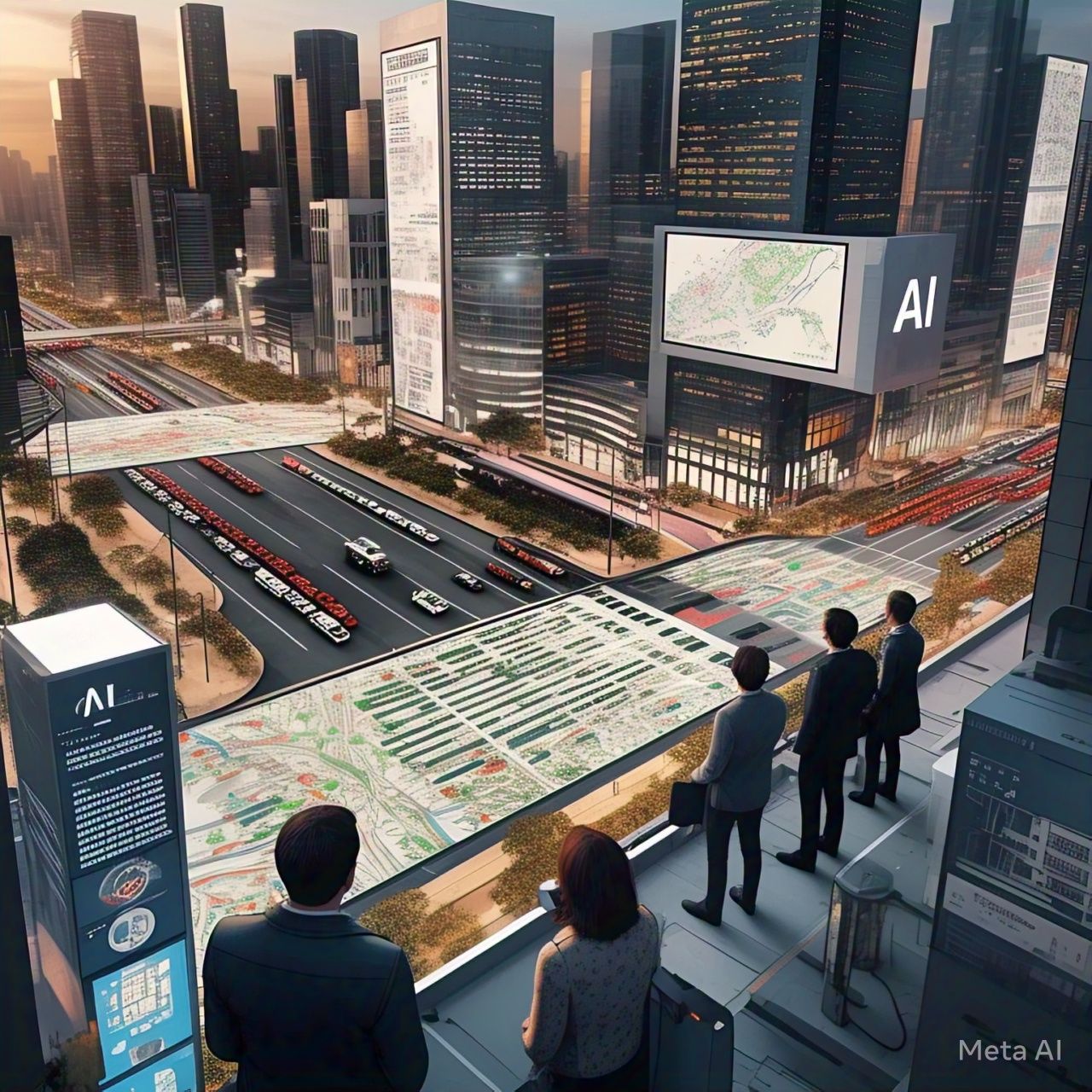Table of Contents
- Introduction
- The Growing Problem of Traffic Congestion
- How AI Predicts Traffic Jams
- Data Collection and Analysis
- Machine Learning and Predictive Algorithms
- Real-Time Traffic Monitoring
- Benefits of AI in Traffic Prediction
- Reduced Commuting Time
- Lower Fuel Consumption and Emissions
- Enhanced Road Safety
- Efficient City Planning
- Challenges and Limitations
- Future Innovations in AI Traffic Prediction
- Conclusion
- FAQs
1. Introduction
Traffic congestion remains one of the biggest challenges for urban centers worldwide. With increasing vehicle numbers and road limitations, traditional traffic management systems are struggling to keep up. Artificial Intelligence (AI) is stepping in as a game-changer, offering predictive solutions that enable cities to manage traffic more efficiently. By analyzing real-time data and using machine learning algorithms, AI helps predict and prevent traffic jams before they occur. This article explores AI’s role in smarter commuting and how it is reshaping the future of urban mobility.
2. The Growing Problem of Traffic Congestion
According to the World Economic Forum, global urban traffic congestion results in billions of dollars in lost productivity annually. Studies show that cities like Los Angeles, London, and Mumbai experience severe traffic delays, leading to increased pollution and commuter frustration. Conventional traffic management systems, which rely on static signals and manual intervention, cannot handle the dynamic nature of modern urban transport. AI-driven traffic prediction offers a proactive approach to mitigating congestion by leveraging real-time and historical data.
3. How AI Predicts Traffic Jams
3.1 Data Collection and Analysis
AI-powered traffic prediction systems collect data from multiple sources, including:
- GPS navigation apps (Google Maps, Waze)
- CCTV cameras and road sensors
- Satellite imagery
- Social media and crowd-sourced data
- Weather and accident reports
This vast amount of data is processed and analyzed to identify traffic patterns and predict congestion hotspots.
3.2 Machine Learning and Predictive Algorithms
Machine learning models analyze past and present traffic data to detect trends and anticipate congestion. These algorithms consider factors such as time of day, weather conditions, and ongoing events to predict traffic flow accurately. Predictive models can also recommend alternative routes, helping drivers avoid potential gridlocks.
3.3 Real-Time Traffic Monitoring
AI-powered traffic management systems continuously monitor real-time traffic data and adjust signals, road usage, and rerouting strategies accordingly. Cities deploying AI-integrated traffic control centers can dynamically optimize traffic flow and prevent bottlenecks before they escalate.
4. Benefits of AI in Traffic Prediction
| Benefit | Description |
|---|---|
| Reduced Commuting Time | AI optimizes route planning, cutting down travel time for commuters. |
| Lower Fuel Consumption and Emissions | By preventing traffic jams, AI helps reduce unnecessary idling and fuel wastage. |
| Enhanced Road Safety | AI can detect potential hazards and prevent accidents by adjusting traffic conditions. |
| Efficient City Planning | Governments can use AI traffic insights to improve urban infrastructure and optimize road networks. |
5. Challenges and Limitations
Despite its advantages, AI-based traffic prediction faces several challenges:
- Data Privacy Concerns: Collecting and analyzing large volumes of data raises privacy issues.
- High Implementation Costs: Deploying AI-driven traffic systems requires significant investment.
- Integration with Legacy Systems: Many cities still use outdated infrastructure that cannot easily support AI solutions.
- Dependence on Accurate Data: Inaccurate or incomplete data can reduce prediction accuracy.
6. Future Innovations in AI Traffic Prediction
AI in traffic management is evolving rapidly, with future advancements including:
- Vehicle-to-Infrastructure (V2I) Communication: Enabling real-time data exchange between vehicles and traffic control systems.
- Autonomous Traffic Control Systems: AI-driven, self-regulating traffic networks that minimize human intervention.
- AI-Powered Public Transport Optimization: Smarter scheduling of buses and trains to reduce road congestion.
- Enhanced Predictive Accuracy with Quantum Computing: Faster and more precise traffic predictions using advanced computing power.
7. Conclusion
AI is revolutionizing traffic prediction, making commuting smarter, safer, and more efficient. By leveraging real-time data, predictive analytics, and machine learning, AI helps reduce congestion, lower emissions, and improve urban mobility. While challenges exist, the future of AI-driven traffic management looks promising. As cities continue to invest in smart infrastructure, AI’s role in predicting and preventing traffic jams will only grow.
8. FAQs
Q1. How does AI predict traffic jams?
AI analyzes real-time and historical data from GPS, sensors, and other sources to identify congestion patterns and forecast traffic conditions.
Q2. What are the key benefits of AI-driven traffic prediction?
AI helps reduce commuting time, fuel consumption, emissions, and improves road safety by optimizing traffic flow.
Q3. Can AI traffic prediction work with autonomous vehicles?
Yes, AI traffic prediction integrates with autonomous vehicle systems, enabling smarter navigation and reducing congestion.
Q4. What challenges do AI-powered traffic systems face?
Challenges include high implementation costs, data privacy concerns, and the need for integration with existing infrastructure.
Q5. What is the future of AI in traffic management?
The future includes enhanced predictive accuracy, V2I communication, and fully autonomous traffic control systems.
References
- World Economic Forum. (2023). Urban Mobility and Smart Traffic Solutions.
- National Highway Traffic Safety Administration (NHTSA). (2023). AI in Traffic Prediction: Current Trends and Future Prospects.
- Smith, J. (2022). Artificial Intelligence in Transportation. Transportation Research Journal.




